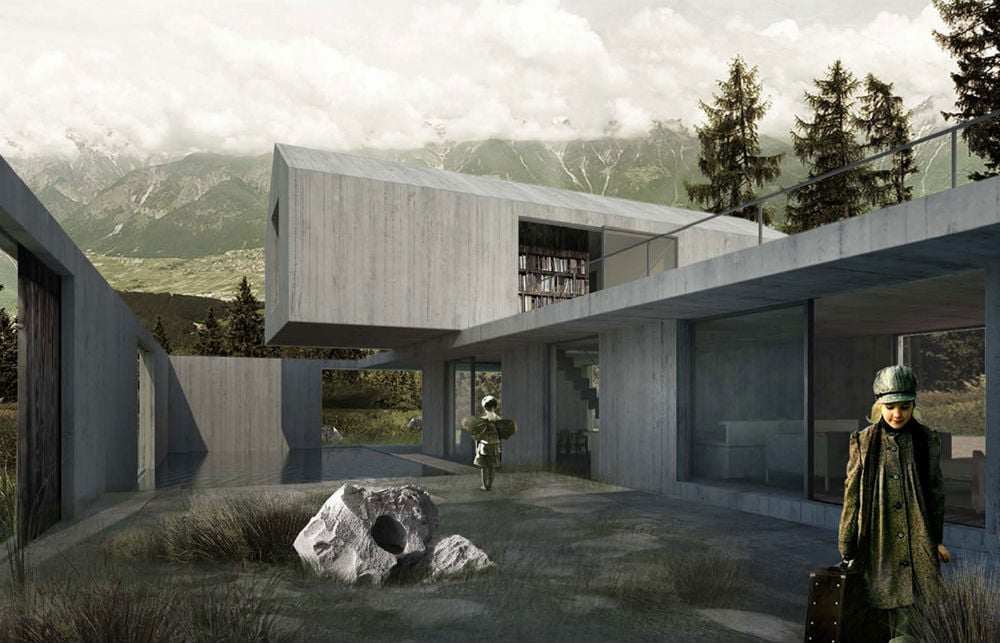
December 4, 2013
Will Open Source Democratize Architecture?
Paperhouses, a new open-source service for architectural designs, promises to make great architecture available to all.
This post originally appeared on ArchDaily under the title, “Paperhouses: Architecture in Open Source.”
Architecture does not change anything. It’s always on the side of the wealthy. The important thing is to believe that it can make life better.” — Oscar Niemeyer
As much as we’d like to deny it, Niemeyer makes a valid point here. Architecture—as it’s traditionally understood—is almost always “on the side of the wealthy”; the profession, as it has existed for about a century, rarely changes anything; and yet – and yet – it can make life better. If only for a select few.
But what if architecture could make life better for the many. What if good-quality, life-bettering architecture were open-source and available to download off the internet? For free?
Well, thanks to Paperhouses, it already is.
While other sites have offered downloadable plans before—most notably Wikihouse—the idea behind Paperhouses, founded by Joana Pacheco, is one based on collaboration: world-class architects freely provide world-class architecture to professionals and laymen, who can then download and adapt these plans as they see fit (adjusting the design for program, square footage, climate, etc.) In this act, a conversation – between clients, builders, and architects – is born.

Dellekamp Architects’ design for Paperhouses.
Courtesy Paperhouses
Respected architecture offices, such as Tatiana Bilbao Architects, EMBT, and architecturespossibles have already signed up for the challenge, each offering up a design – free of charge – to Paperhouses’ audience.
At this point, you’re probably thinking – who in their right mind would freely offer a design of their own, to be tampered with and tweaked, for no monetary gain?
According to Pacheco, many more than you may think. Speaking with me, Ms. Pacheco described architects as falling into two ideologically distinct camps:
If an architect looks at architecture like art, then making available a template, just for its arms and legs to be dissected… they’re resistant. These architects tend to think of their work as a finished and perfect piece for a specific program and site – a notion which is actually totally oblivious of time. But another group of architects embrace this idea of the participation of the people, of a collaboration between user and architect that can bring about different and interesting results.These architects realize architecture is never complete [nor truly theirs], life goes through it, tenants change – we’re just allowing that to happen more quickly.

Florian Busch Architects’ design for Paperhouses, My Private Sky.
Courtesy Paperhouses
And Paperhouses’ democratizing approach could not have emerged at a better time. As Pacheco suggests, we are in a moment of sea-change in the architecture community: a moment when the star of the “starchitects” is fading and a new generation of architects is increasingly embracing the idea of an architecture for all. This, combined with the economic crisis (and its bursting housing bubble) creating a palpable need for affordable, well-designed housing, makes housing ripe for a radical, affordable renovation.
Of course, even Pacheco admits that not all architecture lends itself to open-source; there are some projects that are simply “one-of-a-kind.” However, she still argues: if architecture is truly meant to be public, then open-source is the only way of assuring its universality. As Pacheco put it in a blogged manifesto:
My goal is to put architecture within reach, which means to destitute high-end design of its price tag and forbidden aura, and to engage people in their own project. Universal access via free licensing is the only process which simultaneously makes knowledge accessible, democratic, and amenable to a diversity of production.
Vanessa Quirk is the manager of editorial content at ArchDaily, where she writes about architecture, design, and urban planning. You can connect with her on LinkedIn or follow her on twitter @vmquirk.
Recent Viewpoints
Viewpoints
Sustainability News Updates for Q2 2025





